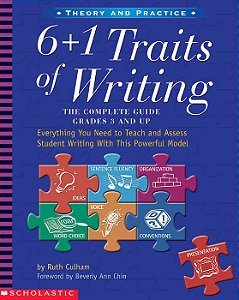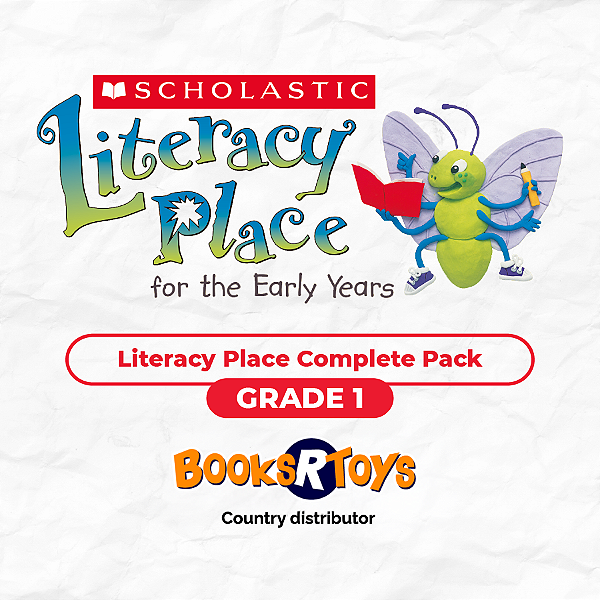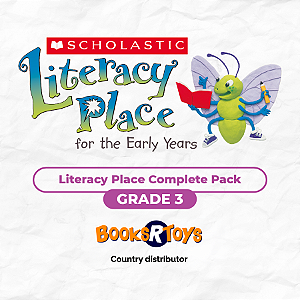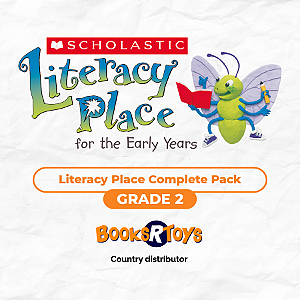Literacy Place Complete Pack (Print-Only) - Grade 1
-
- 1x de R$ 40.972,72 sem juros
- 2x de R$ 20.486,36 sem juros
- 3x de R$ 13.657,57 sem juros
-
R$ 40.972,72

-
R$ 40.972,72

Literacy Place for the Early Years provides research-based programming that covers a wide range of student literacy needs. It is based on a balanced approach to reading and writing, using the gradual release model, and recognizes the need to be flexible and resourceful in meeting the diverse needs of students. Literacy Place for the Early Years provides multi-level, high-interest materials for both reading and writing, with many cross-curricular connections. The teacher support materials are designed to help teachers manage differentiated,small-group instruction. They provide a range of strategies and prompts to use with students who are at differing stages on the literacy continuum,suggest differentiated learning opportunities, and a wide variety of assessment tools for proof of students’ current understanding and future instructional needs.
• 10 Shared Reading Packs (Big Books)
• 60 texts for Small-Group Shared/Guided Reading (Levels A–K)
• Teacher's Guides for Reading, Writing, and Working with Words, and Program & Planning Guide (K–3)
Grade 1 Small-Group Shared/Guided Reading
Levels A-C feature 2 Teaching Plans: 1 to use for Small-Group Shared; 1 to use for Guided Reading. You choose the approach!
- Level A 6-packs (5 titles): The Door, I Can Ride, My Picture, Salad, What Can Dogs Do?;
- Level B 6-packs (5 titles): The Ants Go Home, Dress Up, I Am Big, Is It Alive?, What Colour is This Fish?;
- Level C 6-packs (5 titles): Big and Small, Hair, Home Run!, This Is Canada, Up and Down;
- Level D 6-packs (5 titles): I Can Draw!, My Little Sister and Me, My Show, What Can Walk on Walls?, What
Do You See?; - Level E 6-packs (8 titles): The Accident, Here Comes the Parade, I See, Make it Move, My Dad, Same and
Different, Something's Coming!, To the Rescue!; - Level F 6-packs (8 titles): Buses, Cars, and Trucks, Go Home Daisy, Going Swimming, Let's Make Cards,
The Magic Pot, Paint a Mouse Face, Who Did Jake's Chores?, What's for Breakfast; - Level G 6-packs (6 titles): Birthday Noodles, The Birthday Surprise, The Frog Prince, How Big Are You?,
Mita's Lost Ball, Signs Are Everywhere!; - Level H 6-packs (6 titles): A Pod for a Baby Orca, Grandpa's Garden, How Do Polar Bears Stay Warm?,
Plant a Seed, True or False?: Finding Out About Newfoundland Dogs, Memories; - Level I 6-packs (6 titles): Come Home Bailey, Hop! Spring! Leap! Animals That Jump, The Sleepover, Too
Ba-a-ad!, The Trouble with Geese, Tyle's Teacher; - Level J 6-packs (4 titles): Getting Ready for Winter, Tyler's New Friends, A Wild Eagle Needs a Beak, Wild
Horses Couldn't Keep Me Away; - Level K 6-packs (2 titles): Bald Eagles, Tyler's First Sleepover;
- Teacher's Guides for Reading, Writing, and Working with Words, and Program & Planning Guide (K-3).
Planning Guide 1 guide for the whole program
• Resource Overview: philosophy, components, and structure of the resource
• Classroom Management: set-up, routines, scheduling, and getting started
• Oral Language Development and its integration throughout the resource
• English as a Second Language Support and Home Links
• K–3 Developmental Continuums: Oral Language, Reading, Writing, and Working with Words
• Assessment Overview
Reading Guide 1 per grade
• Approaches to Reading Instruction: Read Aloud, Shared Reading, Small-Group Shared
Reading (Kindergarten and Grade 1), Guided Reading, Independent Reading, and a Grade 3
Reading Club • Reproducible Reading Behaviours and Strategies record sheets—with
prompts!
• Setting up and running Literacy Centres
• Assessment tools (also available on-line)
Writing Guide 1 per grade
• Writing Development approaches to teaching Modelled Writing,
Shared Writing, Guided Writing, and Independent Writing
• The Writing Process: 1. Planning and Research; 2. Drafting; 3.
Revising; 4. Editing; 5. Sharing and Publishing
• Assessment tools (also available on-line)
• Teaching support and suggestions for Text Type Studies, Literature Response, Craft and
Convention Lessons, and Printing/Handwriting
Working With Words Guide 1 per grade
• Teaching Plans grouped into Five Areas of Working with Words:
1. Phonological and Phonemic Awareness; (K–1)
2. Letter Knowledge; (K–1)
3. High Frequency Word Recognition
4. Word Solving and Building
5. Language Predictability
• Approaches to Working with Words Instruction
• 3 approaches to teaching the strategies (in the five Areas):
In Context, Focused Lessons, and Independent Practice
• Activities and Lessons for each Area using these 3 approaches
• Assessment support and tools (many also available on-line)
• Home Connections, references, and additional resource lists
Produtos relacionados
-
 6 plus 1 traits of writing the complete guide grades 3 and upR$ 327,66até 3x de R$ 109,22 sem juros
6 plus 1 traits of writing the complete guide grades 3 and upR$ 327,66até 3x de R$ 109,22 sem juros












